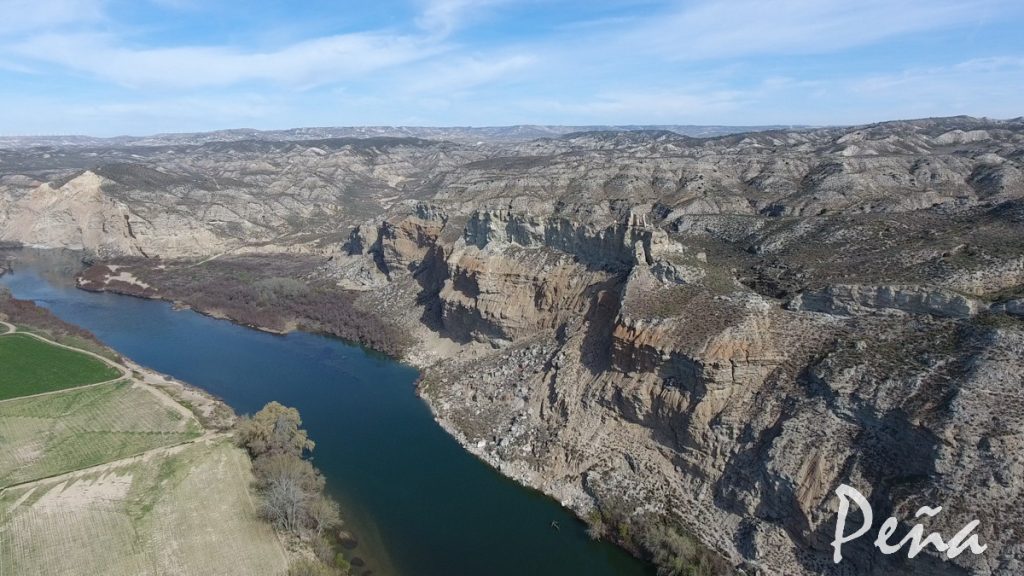Interactions between fluvial dynamics and scarp retreat in the Central Ebro Basin during MCA and LIA periods: Palaeogeographical and geoarchaeological reconstruction.
Peña-Monné, J.L., Sampietro-Vattuone, M.M., Longares- Aladrén, L.A., Sánchez-Fabre, M., Constante, A., 2021. Interactions between fluvial dynamics and scarp retreat in the Central Ebro Basin during MCA and LIA periods: Palaeogeographical and geoarchaeological reconstruction. Palaeogeography, Palaeoclimatology, Palaeoecology, 567, 110301. |

ABSTRACT.
The scarp of Remolinos-Juslibol is an abrupt relief formed by Miocene gypsums located on the left bank of the Ebro River, in the vicinity of the city of Zaragoza. This work provides data for the reconstruction of the channel morphology and dynamics of the Ebro River and its interaction with the gypsum scarp from the Little Ice Age (LIA) to the present day. At the same time, several scenarios are also proposed for this interaction during the MCA (Medieval Climate Anomaly). To do this, different proxies are used, such as historical maps and records, morphosedimentary records of the tributary ephemeral streams, data from paleofloods, and the evolution of Medieval castles built on the scarp. During the MCA, the river was centered on its floodplain. Large alluvial fans developed by lateral ephemeral streams coming from the north since at least the Chalcolitic-Bronze age continued with their dominant dynamics during the Medieval times. Interaction with the scarp was scarce during this period and this allowed the building of castles on this relief. Later, the Ebro River moved its meanders towards the scarp, eroding most part of the lateral alluvial fans; in addition, infilled valleys were left hanging by the rapid retreat of the scarp and the events of rockfalls and landslides were very active. The map of Dew Rodolphe (1746) and the dating of these events confirm that this erosive process developed mainly during the second part of the LIA (18–19th centuries). From the middle of the 19th century, the fluvial sinuosity of the Ebro River increased and progressively separated from the scarp, which evolved to the present relative stability, in
which landslides and rockfalls are scarce.



